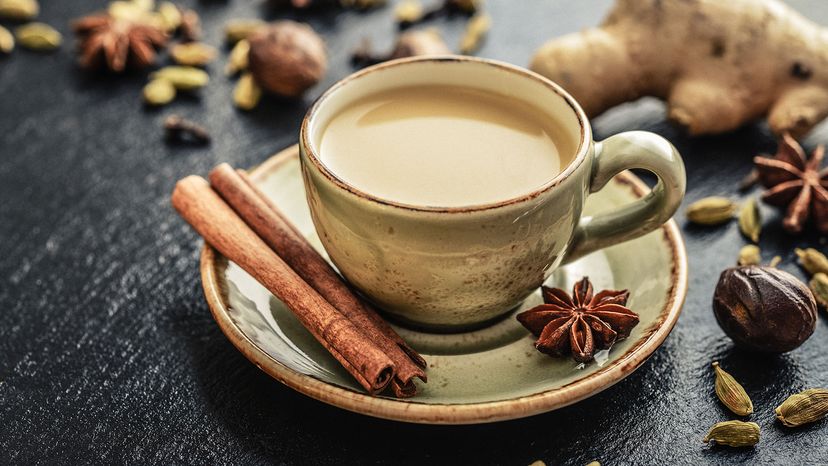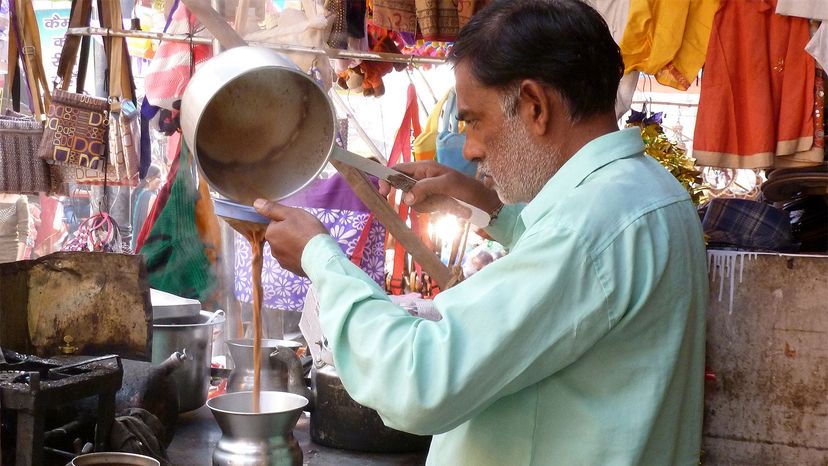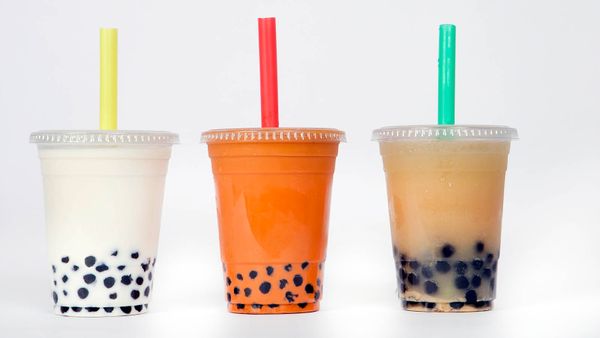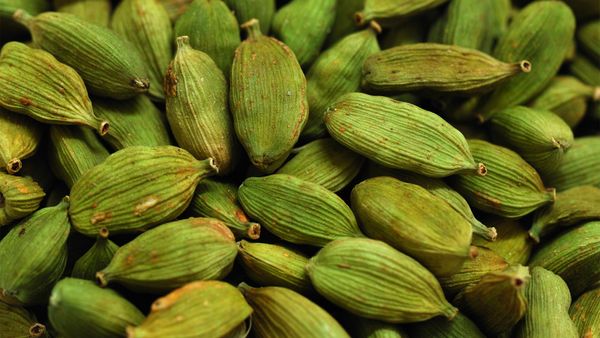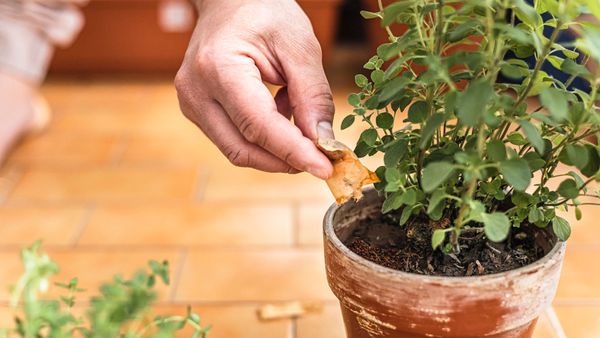A classic masala chai recipe has three basic building blocks. "Masala, again, means spice," says Sanyal. "Chai means tea, and then we have our milk." The spice blend is what makes a cup of chai unique and special. It can vary by region, and even family to family. "Everyone has their own recipe," says Sanyal, "but it's usually a mix of cardamom, ginger, cinnamon, cloves, and peppercorn. Some people put in mint, and people put in lemongrass. It's usually the sweeter spices used in South Asian cooking."
To brew chai, the first step is to simmer the spices in a saucepan with a cup or so of water. Then, once the flavors have blended and infused, add black tea and let it brew as you normally brew it. Experimentation is the key to learning how to create your own perfect spice mix and tea ratio. You can make it as strong and as spicy as you like it. After a few minutes of brewing, strain the spices and coarse tea out. Finally, add milk, as little or as much as you like, to make everything rich and creamy. You can use any type of milk or cream that you like, but whole cow's milk is best, as its high fat content balances well with the spice mix. Full cream or sweetened condensed milk also work well. While the flavors may be complex, the process is not. The best thing about chai, Sanyal says, is that anyone can make themselves a cup.
"Chai has been a bit shrouded in mystery," he says. "People have heard of the word but they don't know it's really easy to make at home. And actually, it's so delicious when you make it at home, because you can make it your own and develop your own relationship with it. It's something that's accessible to everyone."
